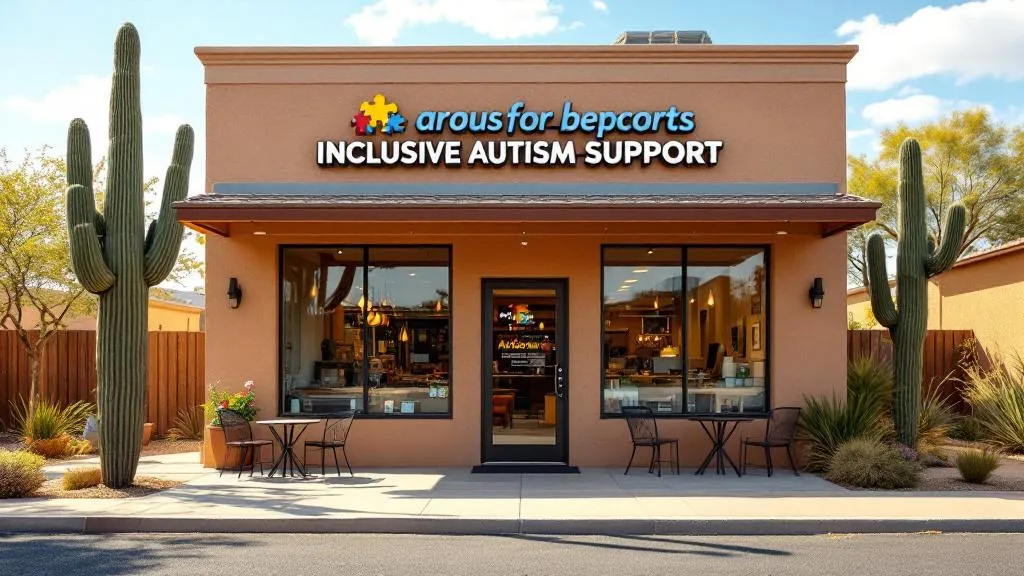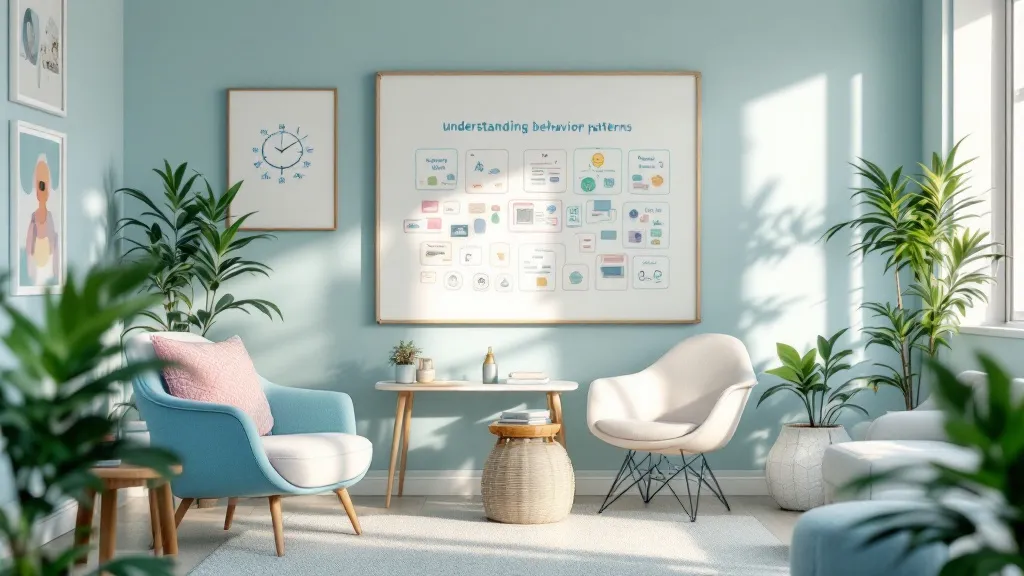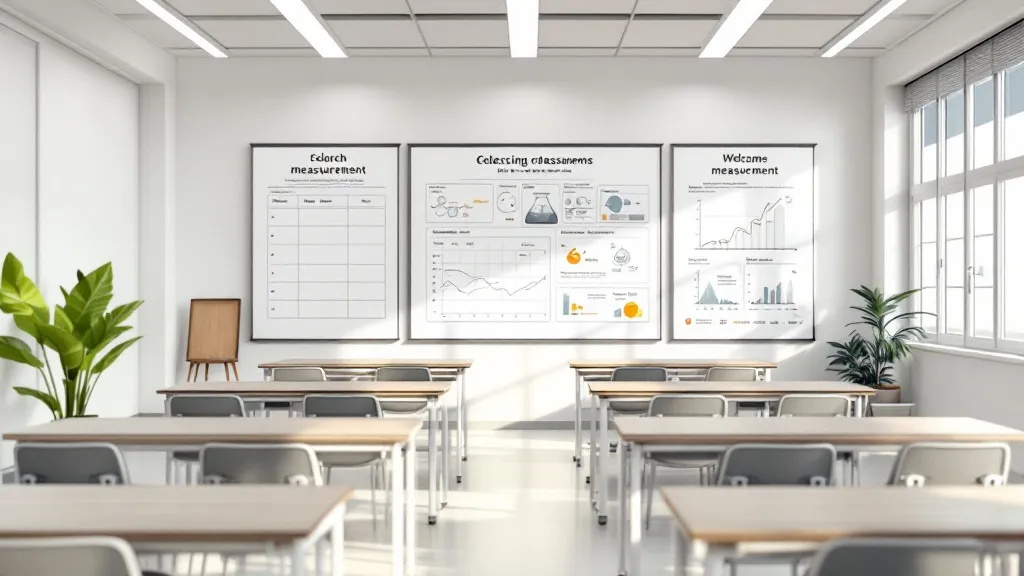How therapists assess progress in ABA programs
Tracking Growth: The Metrics Behind Effective ABA Therapy

Understanding How Progress Is Measured in ABA Programs
Applied Behavior Analysis (ABA) is a targeted, evidence-based approach commonly used to support individuals with autism in developing essential skills across multiple domains. Central to ABA’s success is the ongoing assessment of progress, which guides tailored interventions. This article explores the methods, tools, milestones, and process involved in evaluating developmental gains within ABA therapy, highlighting its crucial role in ensuring meaningful and effective outcomes.
Foundations of Progress Assessment in ABA
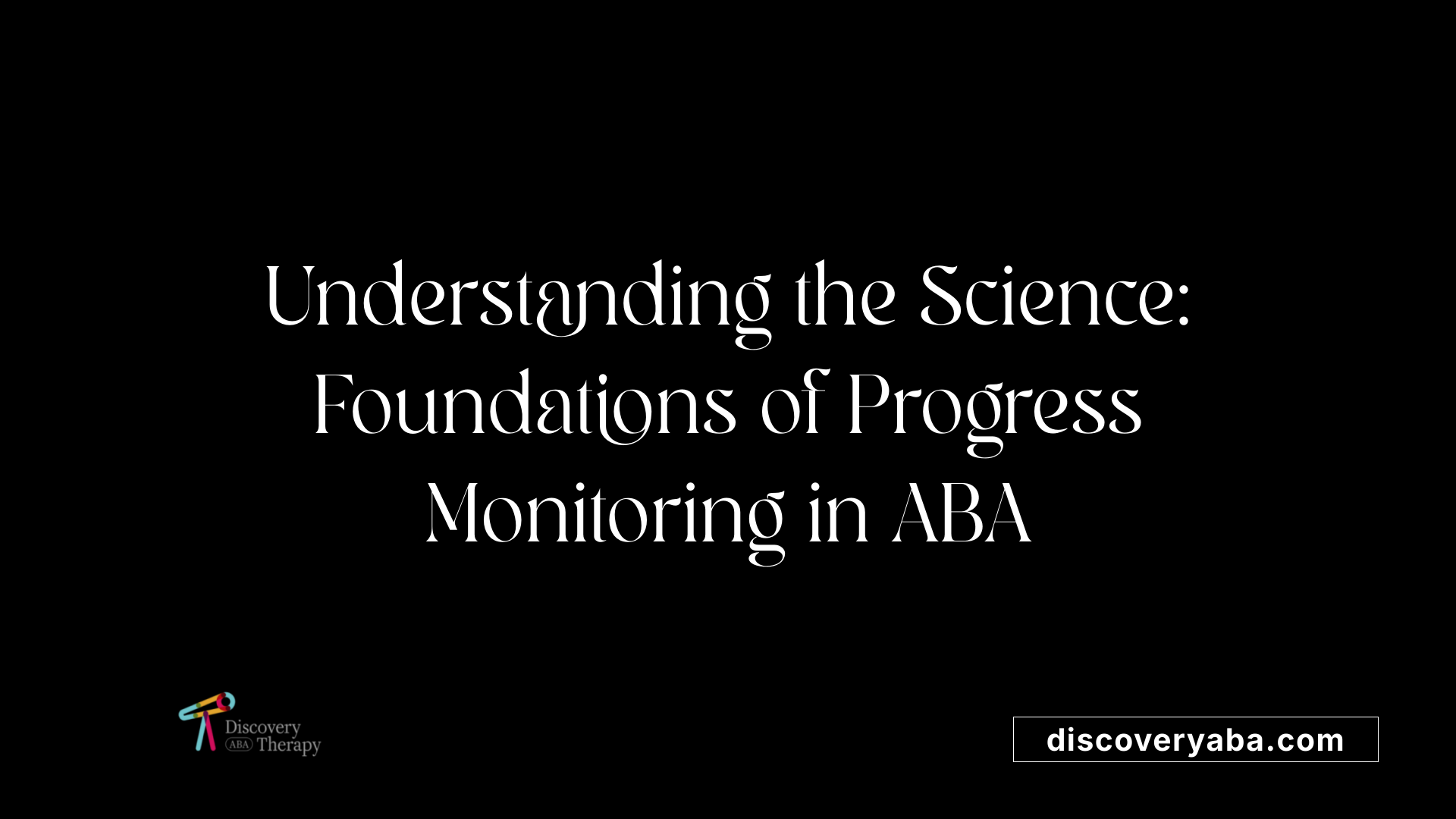
What is the scope and purpose of progress assessment in ABA?
Progress assessment in Applied Behavior Analysis (ABA) plays a crucial role in ensuring that therapy is effective and aligned with each child's developmental needs. It involves systematically measuring behavioral and skill developments to determine whether therapeutic goals are being achieved. The primary aim is to gather objective data that reflects real progress, which guides clinicians in tailoring interventions. Regular assessments help identify areas of improvement and highlight challenges, allowing for precise adjustments.
This ongoing process helps maintain a focus on meaningful growth, whether in communication, social skills, daily living skills, or behavior management. Additionally, progress reports generated from these assessments serve as vital communication tools with families, educators, and other specialists. They provide a clear picture of the child's development, supporting collaborative decision-making.
How do behavioral science and learning theory underpin progress evaluation?
The foundation of progress assessment in ABA derives from behavioral science and learning theory. ABA therapy is grounded in the science of learning and behavior, which emphasizes understanding how behaviors are acquired, maintained, and modified within an environmental context. The principles of reinforcement, antecedents, and consequences guide intervention strategies.
Progress monitoring relies on these principles, as data collection focuses on observable behaviors and measurable skills. Techniques such as frequency counts, duration recordings, and systematic observations help quantify behaviors and learning outcomes.
Behavioral theory underscores that change results from specific, targeted interventions, and regular data collection provides empirical evidence of these changes. This scientific approach ensures that modifications are data-driven, objective, and responsive to individual needs.
Why is ongoing assessment vital for effective ABA therapy?
Continuously evaluating progress is essential because each child's developmental trajectory and response to therapy can vary widely. As children acquire new skills or face new challenges, therapies must adapt.
Regular assessments allow practitioners to determine if interventions are effective or if strategies need refinement. For example, if a behavior persists despite intervention, practitioners can analyze data to understand why and shift tactics accordingly.
Furthermore, marker points like milestones in communication, social interaction, and daily living establish clear indicators of progress. These markers help in setting realistic, measurable goals tailored to the individual child's learning pace.
Tools and methods used to track progress
A variety of data collection tools are employed to monitor a child's development accurately. Direct observation involves carefully watching behaviors during therapy sessions and recording occurrences using frequency data, duration measures, or interval recording.
Standardized assessments such as the Verbal Behavior Milestones Assessment and Placement Program (VB-MAPP), ABLLS-R (Assessment of Basic Language and Learning Skills - Revised), and AFLS (Assessment of Functional Living Skills) provide structured frameworks for evaluating skills across domains.
Visual data representations like graphs enable therapists and families to see trends over time clearly. These tools collectively support making informed decisions about the ongoing needs and progress of the child.
Communication and collaboration in progress assessment
Effective progress assessment also hinges on active involvement of parents, caregivers, and therapists. Sharing data, discussing observations, and holding review meetings foster a collaborative environment. Feedback from those who interact with the child daily enriches understanding and helps ensure that intervention strategies are seamlessly integrated into daily routines.
When the data indicates stagnation or regression, team members can work together to analyze why and strategize new approaches. Similarly, if a child masters a particular skill, the team can set new, more advanced goals.
The importance of flexible, data-driven adjustments
Because children are constantly developing, ABA programs must be adaptable. If progress plateaus or negative behaviors emerge, data analysis helps determine whether current strategies are appropriate or need to be revised.
Adjustments may include increasing the intensity of reinforcement, introducing new teaching materials, or shifting focus to different skill areas. This flexibility ensures that therapy remains relevant and challenging, promoting continuous growth.
How progress reports enhance communication with families
Progress reports are vital tools for keeping families informed and engaged. They usually include visual data like graphs, summaries of skill development, and behavioural improvements.
These reports help caregivers understand the child's progress in an accessible way and motivate continued involvement. Collaborating with families ensures that interventions are reinforced at home, enhancing overall outcomes.
Final thoughts on ongoing assessment
In essence, progress assessment in ABA is a dynamic process integral to effective therapy. Grounded in behavioral science and learning principles, it ensures that interventions are targeted, measurable, and adaptable.
Consistent monitoring and collaboration between professionals and families foster a supportive environment for the child's growth. Data-driven adjustments help optimize therapy, making sure each child reaches their full potential in communication, social skills, independence, and beyond.
Core Principles and Scientific Basis
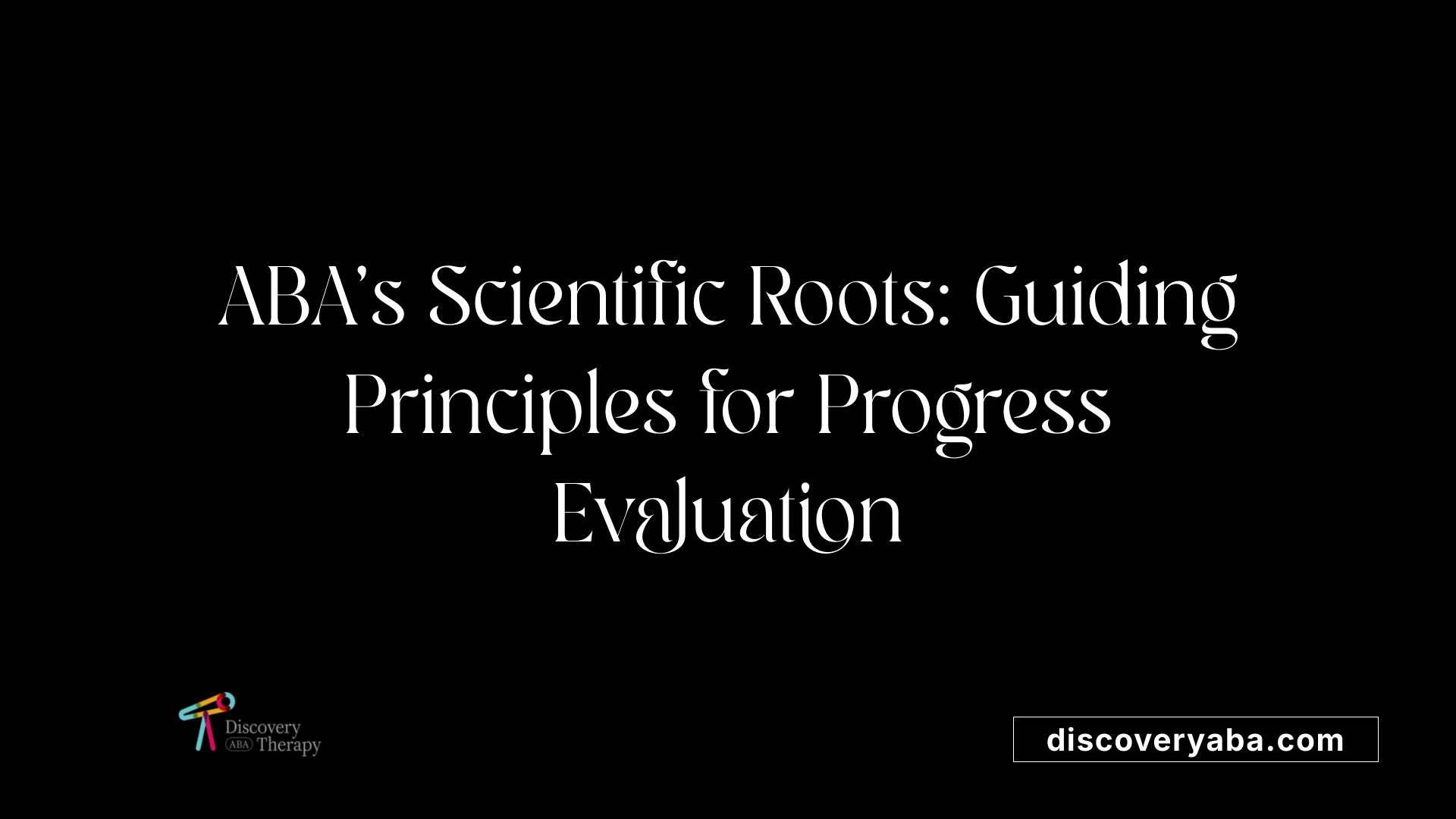
What is the scientific foundation of ABA?
Applied Behavior Analysis (ABA) hinges on the scientific study of learning and behavior. This discipline involves understanding how behaviors are influenced by environmental factors and how learning occurs through interactions with these stimuli. Since the 1960s, methods derived from behavior analysis have been extensively studied and refined to help individuals, especially those with autism, develop essential skills and reduce harmful behaviors.
Why is progress assessment important in ABA therapy?
Progress assessment is crucial in ABA because it provides an objective way to measure whether the therapy is effective and whether the child's developmental goals are being met. Regularly collecting data through direct observation, caregiver feedback, and standardized tools allows therapists to detect subtle changes in behaviors and skills over time. These assessments create a clear picture of progress, enabling practitioners to adjust programs as needed.
By monitoring progress meticulously, therapists can set new targets, refine strategies, and ensure the intervention remains relevant to the child's evolving needs. Written progress reports, often with visual graphs, communicate growth effectively to families and other professionals. Such ongoing assessment guarantees that ABA therapy remains goal-oriented, efficient, and truly responsive to the child's development.
How are personalized, data-driven therapy plans constructed?
Each ABA program starts with a comprehensive initial assessment that includes parent interviews, direct observations, and standardized assessments such as VB-MAPP or ABLLS-R. These evaluations clarify a child's current skill levels, behavioral challenges, strengths, and unique needs.
Based on this data, practitioners develop individualized treatment plans emphasizing specific goals in communication, social skills, self-care, academic abilities, and behavior reduction. Data collection during sessions, including frequency counts and interval recordings, informs ongoing adjustments.
Therapists regularly analyze collected data to assess progress in real-time and over the long term. This analysis helps determine which strategies are effective and which need modification. Consequently, programs adapt dynamically, ensuring the child receives tailored interventions that foster meaningful learning and independence.
How is progress evaluated in ABA?
Evaluation of progress involves multiple methods and criteria. Commonly, data on specific behaviors—such as the frequency of a skill or the duration of attention—is collected systematically during therapy sessions.
Assessment tools like the VB-MAPP, ABLLS-R, and AFLS help quantify developmental progress and behavioral changes. Therapists monitor improvements in targeted skills like language, social interaction, and daily living activities. Positive behavioral shifts include increased use of communication, better social participation, and reduced challenging behaviors.
Furthermore, generalization of skills across different settings and the maintenance of gains over time are critical success markers. Formal evaluations are often scheduled every six months to review overall effectiveness and to guide the next steps.
Data-driven decisions are supported by visual representations such as graphs, which illustrate progress trajectories. These visual tools, along with feedback from parents and teachers, confirm whether goals are met and inform necessary program adjustments.
What are the criteria used to measure success?
Success in ABA is measured through both quantitative data and qualitative observations. Improvements in communication include more frequent and complex verbal or nonverbal exchanges.
Social skills are assessed by behaviors such as initiating eye contact, engaging in joint attention, and participating in reciprocal interactions. Progress in self-care includes increased independence with routines like dressing or toileting.
Academic milestones, like following instructions or recognizing letters, are monitored and graded based on accuracy and consistency. Challenges like tantrums or aggression are targeted for reduction.
Effective ABA programs demonstrate skill generalization—skills used across different environments—and sustainability over time. Progress reports with detailed visual data help communicate these changes.
How is ongoing progress monitored?
Continuous data collection is vital for tracking behavioral improvements and skill acquisition during ABA sessions. This includes recording how often behaviors occur, how long specific activities last, and how quickly responses are made.
These metrics are analyzed regularly to evaluate if a child's performance aligns with developmental expectations. If progress plateaus or setbacks occur, therapists review data to identify potential causes.
Adjustments to strategies, such as modifying reinforcement techniques or incorporating new goals, are based on this ongoing analysis. Family involvement is encouraged to reinforce skills at home and to ensure consistency.
What role do families and caregivers play?
Parents and caregivers are integral to the success of ABA therapy. Their active participation in implementing strategies enhances learning and generalization. Regular communication with therapists, participation in training, and creating supportive routines at home reinforce the child's development.
How are milestones in child development tracked?
Milestones in communication, social skills, cognition, self-care, and behavior are used to gauge progress. Early communication goals include requesting, labeling, and responding appropriately to social cues.
Behavioral milestones involve reducing challenging behaviors, increasing adaptive responses, and developing self-regulation.
Social milestones focus on eye contact, joint attention, turn-taking, and understanding social cues.
Cognitive and academic milestones such as following directions and recognizing symbols underpin broader learning.
Self-care milestones like dressing, grooming, and eating foster independence.
Progress in these areas is demonstrated by real-life application and consistent use across different settings.
How does data guide individualized treatment?
Data collection—via observation, standard assessments, and caregiver reports—is the backbone of personalized ABA.
This information determines what goals to set, how to prioritize interventions, and when to make adjustments. Data analysis helps identify trends, strengths, and areas needing support.
Therapists routinely review data to adapt programs, ensuring that the interventions are effective and aligned with the child's specific developmental trajectory.
What is involved in the initial ABA assessment?
The first step involves collecting comprehensive developmental histories through parent interviews, analyzing routines, and identifying strengths and concerns.
Direct observation of the child in various settings helps gather natural behavior data.
Standardized assessments, such as VB-MAPP or ABLLS-R, help evaluate speech, social, and daily living skills.
Functional Behavior Assessment (FBA) pinpoints reasons for challenging behaviors using ABC data—antecedents, behaviors, and consequences.
The initial assessment informs goal setting, expected outcomes, and program design, laying the foundation for effective treatment.
How are progress and success communicated?
Progress reports are generated regularly, illustrating achievements through graphs and data summaries. These reports are shared with families to keep them informed and engaged.
Feedback from caregivers about daily routines and behavioral changes complements formal data. This collaborative approach ensures that therapy adapts continuously to the child's needs.
How do therapy goals adapt over time?
Goals are fluid and evolve based on the child’s progress. When a milestone is achieved, new skills are targeted. Conversely, if progress stalls, strategies are reviewed, and goals may be refined or expanded.
Parents and therapists work together to prioritize goals, ensuring that interventions remain relevant and challenging enough to promote growth.
When should ABA therapy be reevaluated?
Signs that ABA therapy requires review include lack of noticeable progress despite consistent effort, regression in skills, or negative impacts on the child’s well-being.
Periodic reassessment helps determine whether current strategies are effective or need modification. It also ensures that the therapy continues to support the child's overall development and happiness.
Why is data collection essential?
Data collection allows objective measurement of behavior and skill growth. It serves as a factual basis for decision-making, reducing guesswork.
Consistent recording establishes a baseline, tracks ongoing progress, and highlights areas needing attention.
Effective data collection methods include frequency counts, duration measurement, and anecdotal notes. Visual data summaries facilitate communication with families and team members.
How do data and assessments shape lifelong outcomes?
Accurate, ongoing data analysis helps optimize intervention, leading to improved cognitive, social, and functional skills.
Early advances in communication and self-care lay the groundwork for success in adulthood.
Continuous assessment ensures that supports are adjusted as the individual matures, promoting independence and quality of life.
How do structured support strategies influence progress?
Clear, measurable goals guide the therapy process. Support strategies like reinforcement, prompting, and modeling encourage skill acquisition.
Regularly reviewing progress ensures these strategies effectively promote desired behaviors.
Final emphasis: Data as the backbone of ABA
Throughout all stages, data collection remains the foundation of ABA. It drives decision-making, guides adjustments, and validates success.
By systematically tracking behaviors and skills, practitioners can ensure that each child's unique developmental pathway is supported with precision and care.
Assessment Tools and Metrics for Developmental Tracking
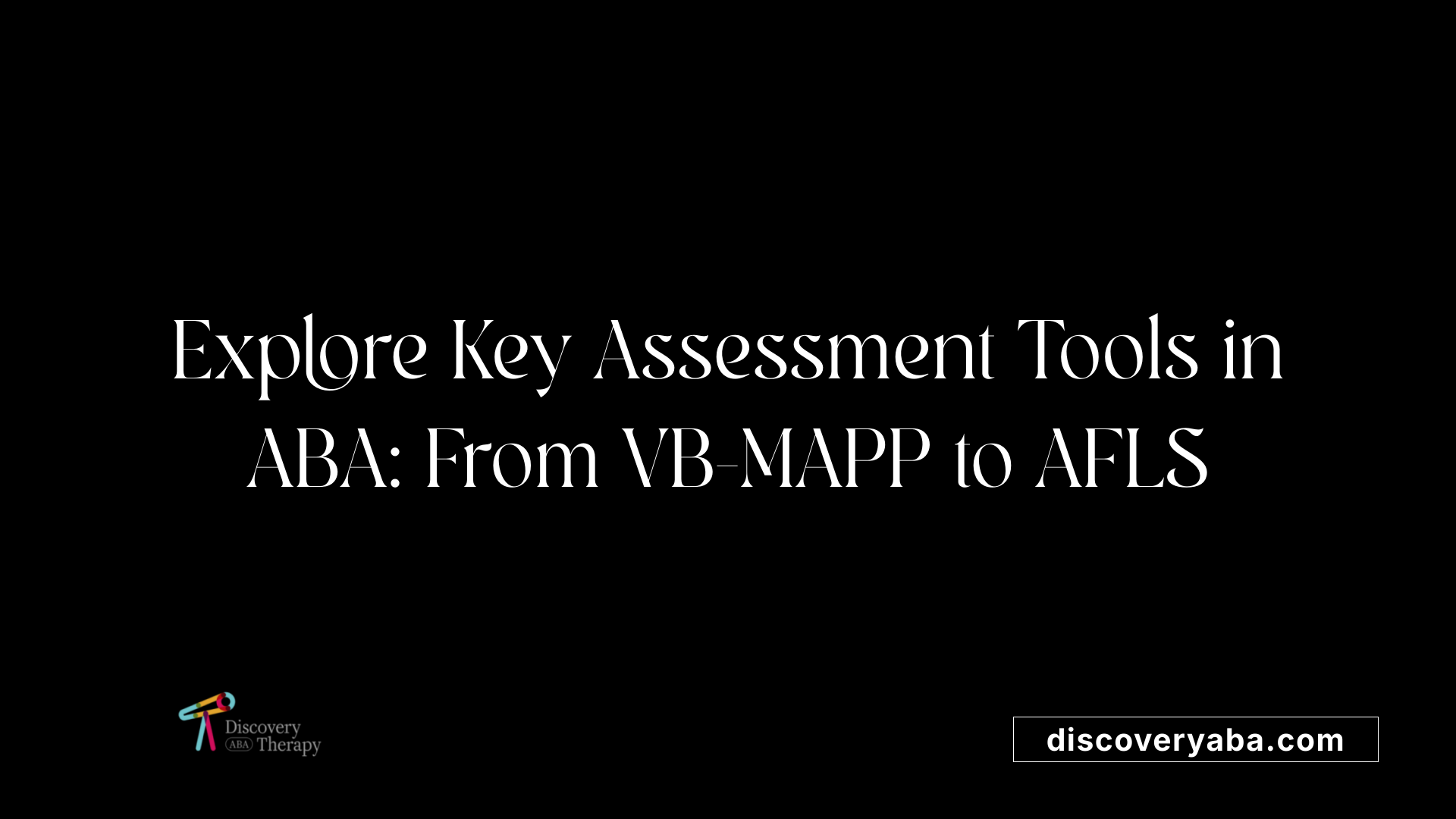
What are the common assessment tools used in ABA programs to measure development?
In ABA therapy, understanding a child's current abilities and tracking their progress over time are essential for creating effective, personalized intervention plans. Several standardized tools are widely used for this purpose.
One of the most prominent assessments is the VB-MAPP (Verbal Behavior Milestones Assessment and Placement Program). It evaluates language development, social skills, and behavior, helping therapists identify strengths and areas needing improvement.
The ABLLS-R (Assessment of Basic Language and Learning Skills-Revised) focuses on foundational skills such as communication, play, social interaction, self-help, motor, and academic skills. It provides a detailed picture of a child’s abilities, guiding targeted teaching strategies.
AFLS (Assessment of Functional Living Skills) assesses critical daily living skills like dressing, grooming, and managing routines. It helps determine the child's independence level in various real-world settings.
Beyond these, the Vineland Adaptive Behavior Scales (Vineland-3) is frequently applied to measure adaptive behaviors necessary for everyday living, including communication, socialization, daily living skills, and motor skills.
PEAK (Promoting Accelerated Learning) offers a cognitive and academic assessment framework, focusing on a child's learning potential across different domains. It guides curriculum development and learning strategies.
In addition to formal assessments, indirect methods such as caregiver interviews, questionnaires, and observations support comprehensive evaluation. These tools gather insights into routines, behaviors, and developmental history.
For ongoing progress monitoring, direct observation techniques like frequency counts (how often a behavior occurs), duration recordings (how long a behavior lasts), and latency measures (time taken to initiate a response) are employed.
Regularly collecting and analyzing this data helps therapists set realistic goals, adapt interventions as needed, and measure the effectiveness of therapy over time.
Summary of Common Assessment Tools
| Tool | Focus Areas | Use Cases | Additional Notes |
|---|---|---|---|
| VB-MAPP | Language, social, behavior | Milestone assessment, placement | Structured framework for progress tracking |
| ABLLS-R | Communication, play, self-help, academics | Skill development planning | Detailed skill subdomains |
| AFLS | Daily living, community, motor skills | Independence skills assessment | Functional skills in real-world contexts |
| Vineland-3 | Adaptive behaviors | Overall functional and social skills | Parent-report, standardized testing |
| PEAK | Cognitive, academic, learning potential | Curriculum development, progress tracking | Emphasizes a child's learning ability |
Role of data collection techniques
Data collection forms the backbone of objective progress measurement in ABA. Methods such as frequency data track how often specific behaviors occur, while duration data record how long behaviors last. Latency measures indicate how quickly a child responds to a prompt or instruction.
These techniques allow practitioners to establish baseline performance, set measurable goals, and monitor changes over time. Data analysis helps identify which strategies are most effective and when adjustments are necessary.
During sessions, routine collection with tools like tally sheets, digital apps, or specialized software ensures accuracy and consistency. Graphs and visual representations of data facilitate communication with families and guide decision-making.
Feedback from data is crucial for modifying programs and ensuring continuous improvement. When a child's progress stalls despite consistent efforts, or if detrimental behaviors emerge, data helps determine whether strategies need reevaluation.
In summary, integrating standardized assessments with meticulous data collection yields a comprehensive picture of a child's development, enabling targeted, responsive, and effective ABA interventions.
Behavioral and Skill Milestones in Development
What are the key milestones and indicators for measuring development in ABA?
In Applied Behavior Analysis (ABA), progress is measured through specific developmental milestones across various skill areas. These milestones serve as indicators of a child's growth and help tailor therapy programs effectively.
Communication Skills
Early communication milestones include requesting items (mand training), labeling objects or actions (tact training), and responding to questions. These are foundational for language development.
Social Interaction Abilities
Milestones such as making eye contact, initiating joint attention, participating in reciprocal conversations, and understanding social cues are significant. These skills foster social confidence and help children engage meaningfully with others.
Self-Care Skills
Key indicators include independent toileting, dressing, grooming, and eating. Achieving these milestones increases a child's independence and readiness for community participation.
Motor Skills
Progress in motor development involves skills like crawling, walking, and fine motor tasks (e.g., grasping, holding). These are essential for physical independence and exploration.
How is progress tracked in ABA?
Progress in these areas is typically monitored through meticulous data collection methods. Observations during therapy sessions, behavior charts, and standardized assessments track how often and how well a child performs specific skills.
Direct observations, frequency counts, duration recordings, and baseline assessments help therapists understand current performance levels. Continuous data collection allows for ongoing analysis, goal adjustment, and reinforcement of successful behaviors.
The role of early intervention and individualized goals
Starting ABA therapy as early as 18-24 months maximizes developmental gains. Goals are personalized based on detailed assessments, including parent interviews, direct observation, and standardized tools like VB-MAPP or ABLLS-R.
Therapists set specific, measurable milestones aligned with developmental stages. Celebrating small successes not only motivates children but also provides feedback on the effectiveness of the current strategies.
How do caregivers and therapists contribute?
Parents and caregivers play a crucial role by implementing learned strategies at home, reinforcing behaviors, and actively participating in progress reviews. Regular assessments and data analysis inform necessary adjustments, ensuring that interventions remain effective and relevant.
By closely monitoring these milestones and making timely adjustments, ABA therapy helps children reach their full potential in communication, social skills, self-care, and motor development.
| Skill Area | Typical Milestones | Indicators and Methods of Measurement | Additional Notes |
|---|---|---|---|
| Communication | Requesting, labeling, understanding questions | Frequency data, observational notes, standardized assessments | Focus on both verbal and nonverbal communication skills |
| Social Skills | Eye contact, turn-taking, social cues recognition | Data from observation, social skill checklists | Critical for social integration and friendships |
| Self-Care | Toileting, dressing, grooming | Behavior logs, caregiver reports, direct observation | Promotes independence and daily functioning |
| Motor Skills | Crawling, walking, fine motor tasks | Video analysis, therapist notes, standardized motor assessments | Foundation for exploration and interaction |
Understanding these milestones and measurement techniques helps ensure interventions are targeted, effective, and adaptable to each child's unique trajectory.
Phases of Behavioral Assessment in ABA
What are the phases involved in behavioral assessment within ABA?
Behavioral assessment in Applied Behavior Analysis (ABA) is a systematic process that helps clinicians understand a child's behaviors, needs, and environments to develop effective treatment strategies. This process includes several distinct phases, each critical to creating a personalized and effective intervention plan.
The first step is initial screening, which involves collecting broad information about the child's overall behavior, developmental history, and routines. This phase often includes parent and caregiver interviews, review of existing records, and observations to establish a foundational understanding of the child's strengths and challenges.
Following the screening, practitioners define and measure specific problems or goals. They identify behaviors that need change, ensuring these are socially significant and relevant to the child's daily life and developmental stage. Quantifying behaviors involves collecting baseline data through direct observation, ABC recordings, and various assessment tools to establish current performance levels.
Next, practitioners pinpoint target behaviors for intervention. These are selected based on their impact on the child's functioning and the potential for meaningful improvement. Target behaviors may include communication skills, social interactions, daily living skills, or reducing challenging behaviors like tantrums or aggression.
Monitoring progress is a continuous part of ABA assessment. Data collection methods such as frequency counts, duration recordings, and interval-based systems are employed during therapy sessions. This ongoing data gathering allows clinicians to assess whether interventions are effective, track progress over time, and identify emerging needs.
The final phase involves follow-up evaluations. These are periodic reviews to analyze data, assess the child's response to interventions, and determine if goals are being met. Based on these evaluations, treatment plans are adjusted as necessary, ensuring that therapy remains responsive to the child's evolving developmental needs.
Throughout this cycle, a variety of assessment tools—like standardized tests, ecological assessments, and progress checklists—are used to gather comprehensive information. This structured approach ensures that each child's therapy is data-driven, targeted, and adaptable, ultimately supporting meaningful and sustainable improvements in skills and behaviors.
The Role of Data and Collaboration in Monitoring Progress
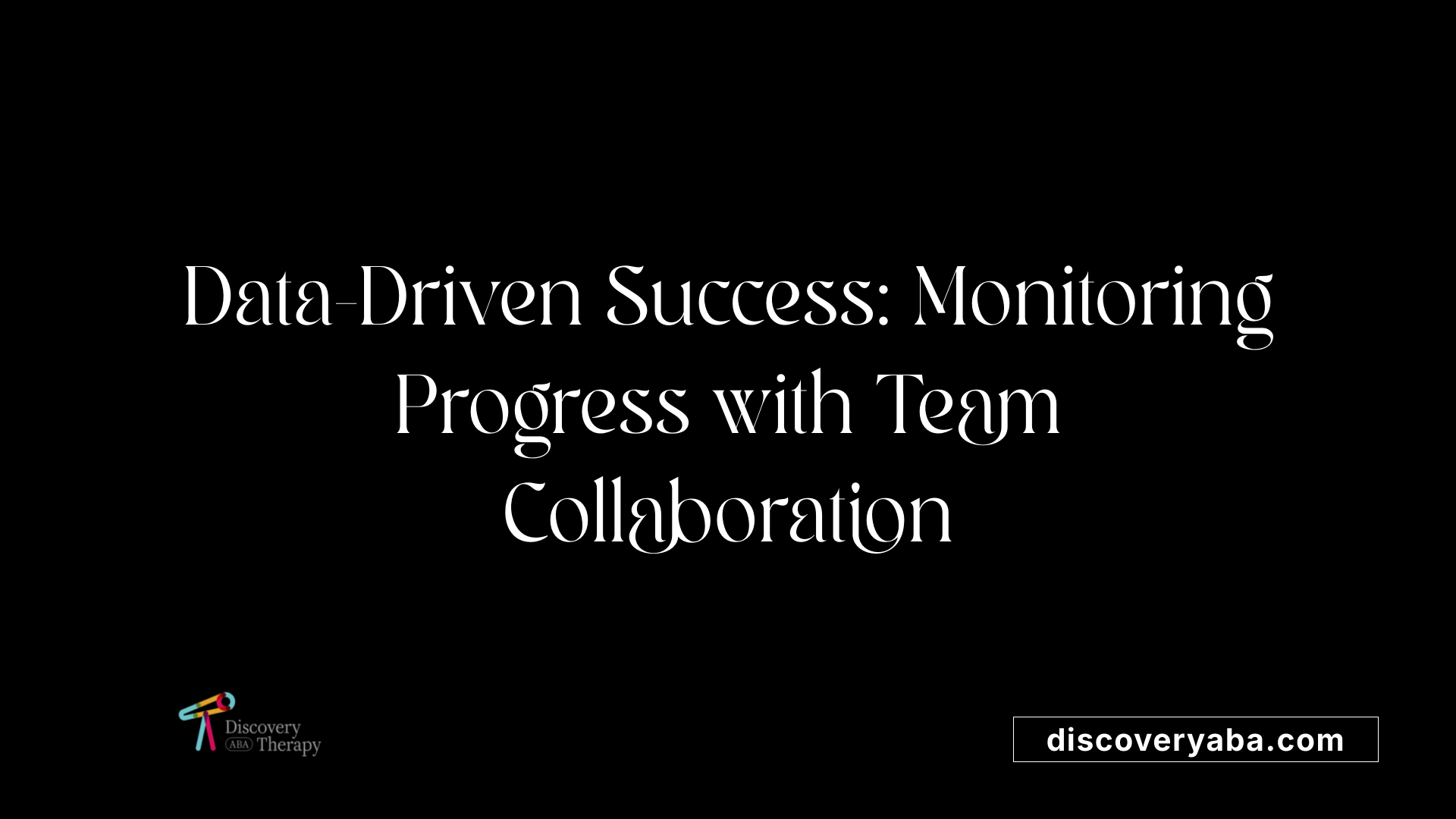
How is progress monitored throughout ABA therapy?
Monitoring progress in ABA therapy relies heavily on the meticulous collection and analysis of data. Therapists use various methods such as direct observation, video recordings, and specialized data sheets to track specific behaviors and skill development.
At the beginning of therapy, a thorough assessment known as the baseline is performed. This helps establish a reference point for measuring future improvements. During sessions, ongoing data collection captures how behaviors are changing over time.
To visualize progress, therapists often create graphs that display trends and patterns clearly. These visual tools help identify whether a child is making expected gains or if adjustments are necessary.
Standardized assessment instruments like the VB-MAPP (Behavioral Milestones Assessment and Placement Program) and ABLLS-R (Assessment of Basic Language and Learning Skills - Revised) are employed periodically. These assessments provide structured insights into developmental milestones and skill acquisition levels.
Apart from data collection, collaboration with parents and caregivers is vital. Progress reports, regular meetings, and open communication ensure that everyone involved can review data, discuss progress, and plan necessary modifications.
This combined approach of rigorous data analysis and active teamwork helps tailor the therapy to the child's evolving needs, ensuring consistent advancement both in clinical settings and everyday environments.
Adapting and Refining Intervention Strategies
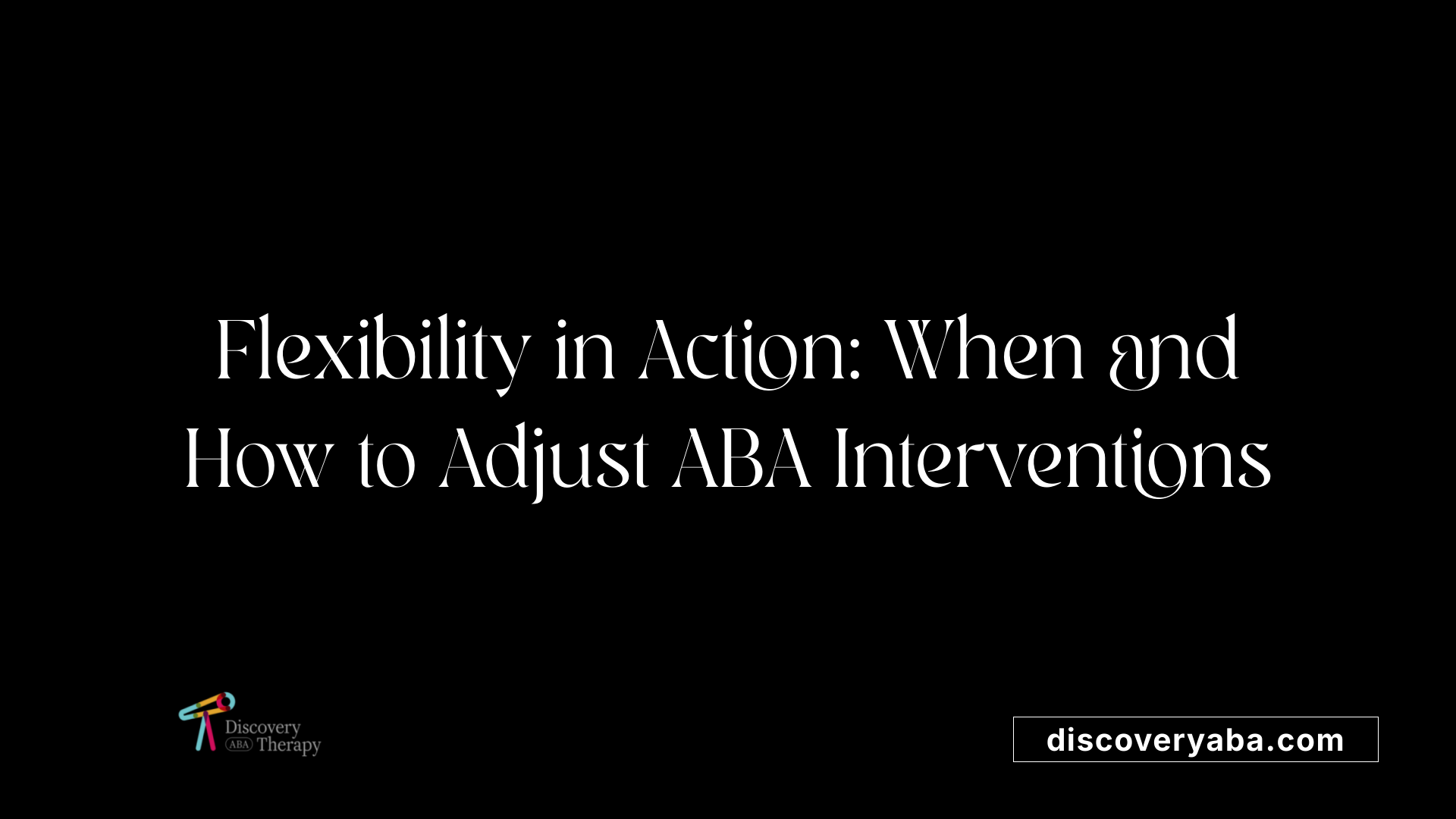
When should adjustments be made in ABA therapy?
Adjustments are vital to maintaining the effectiveness of ABA therapy. Therapists and caregivers should consider modifying strategies when there's evidence of stagnation, such as a lack of progress despite consistent efforts. If a child is not acquiring new skills or if problem behaviors persist or worsen, it indicates the need for reassessment and change.
Regular data collection allows for early identification of plateau phases or regressions. When metrics show little to no improvement over several sessions, it signals that current methods may no longer meet the child's evolving needs.
What are the signs of stagnation or the need for reevaluation?
Signs include persistent challenging behaviors without reduction, no measurable progress in communication, social, or daily living skills, and decreased motivation or engagement during therapy.
Negative impacts on the child's overall well-being or increased frustration during sessions also suggest the need for program review. Consistent lack of progress despite high fidelity implementation indicates that strategies may need to be tailored further.
How can intervention strategies be individualized?
Strategies are personalized based on detailed assessments that include functional behavior assessments and skill evaluations. Information from parents and caregivers about interests, routines, and environmental factors guides intervention adjustments.
A child's interests can be incorporated into reinforcement systems to increase motivation. For example, if a child loves certain toys or activities, these can be used as rewards or motivators.
Furthermore, therapy approaches are adapted to suit learning styles, sensory sensitivities, and developmental levels. This flexibility ensures that interventions are both relevant and effective.
Why is continuous assessment important?
Ongoing assessment allows therapists to track progress meticulously through methods like frequency counts, duration recordings, and interval-based observations. This continuous data collection helps identify trends and informs timely modifications.
Regular review meetings with families and multidisciplinary teams help ensure interventions remain aligned with the child's current needs.
Therapists frequently use visual data representation, such as graphs, to communicate progress and adjustment need to families.
Adjustments may include increasing or decreasing session intensity, changing reinforcement strategies, or introducing new techniques to target specific skills or behaviors.
In summary, therapy should be a dynamic process. When progress stalls or setbacks occur, a comprehensive reevaluation is crucial for success, guiding personalized adjustments that foster continued growth.
Ensuring Success Through Continuous Evaluation
The ongoing process of assessing progress in ABA therapy is integral to delivering personalized, effective, and meaningful interventions. Through meticulous data collection, the use of standardized tools, milestones identification, and collaborative review with caregivers, therapists can adapt strategies to optimize growth. As ABA continues to evolve backed by robust scientific research, its commitment to evidence-based, measurable progress remains the cornerstone for empowering individuals with autism and related developmental challenges to reach their full potential.
References
- Applied Behavior Analysis (ABA) | Autism Speaks
- How Do I Assess the Effectiveness of ABA Therapy?
- Measuring Progress in ABA Therapy - MBC Behavior Analysis
- Key ABA Therapy Milestones: What Progress Looks Like
- Why An ABA Therapy Assessment is a Crucial Step
- Understanding the Role of Data in ABA Therapy: How Progress is ...
- Measuring Progress: Tracking Developmental Milestones with ABA ...
Does Your Child Have An Autism Diagnosis?
Learn More About How ABA Therapy Can Help
Find More Articles
Contact us
North Carolina, Nevada, Utah, Virginia
New Hampshire, Maine
Arizona, Colorado, Georgia, New Mexico, Oklahoma, Texas
.avif)




